Canon R8 vs RP: the new EOS R8 or old EOS RP which is best for you?
Canon's two budget-conscious full-frame Canon R8 and EOS RP cameras go head to head, but which is better purchase?
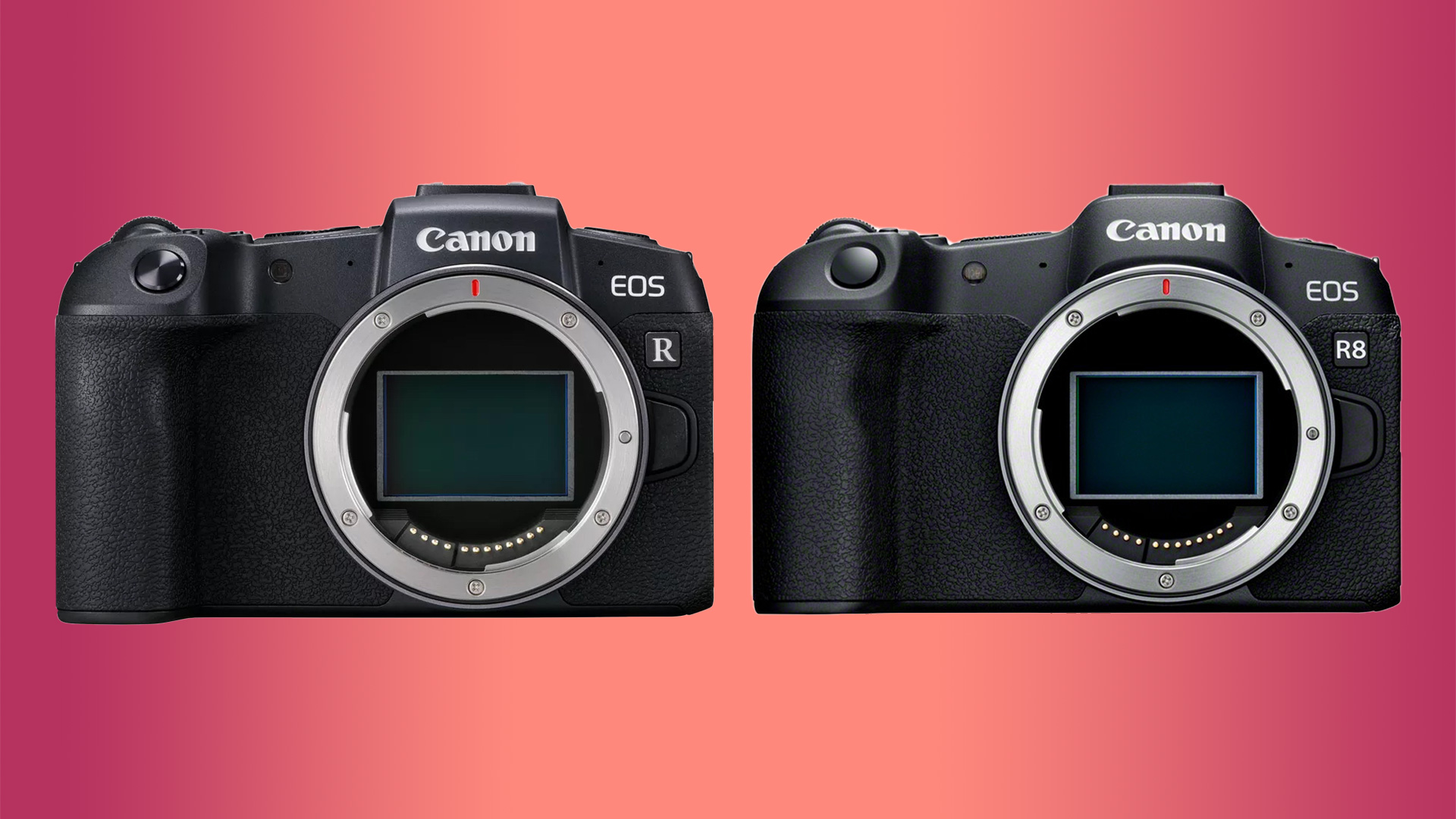
Canon's EOS R8 and EOS RP both sport full frame sensors and nearly the exact same camera body, which makes sense when you learn the Canon EOS R8 was based on the original EOS RP. But when two cameras have the same body and the same full frame sensor, how do you tell these two cameras apart?
The Canon EOS RP was introduced in 2018 as an entry-level full frame camera and became one of the best affordable cameras and one of the best cameras for beginners. The EOS RP's aim was to provide a step up for those first getting into photography, or smaller format shooters who wanted the added benefits that full frame can provide over smaller formats such as increased depth of field with more pleasant bokeh and a wider dynamic range.
Canon has now introduced the Canon EOS R8, which is also a full frame camera with a competitive price point. However, things have moved on since the original EOS RP and now many more people are looking for the best hybrid camera or best vlogging camera as more content creation moves into video and social media, with the poised to serve that market.
For today's photographer, is the EOS RP still up to scratch or has it been superseded by Canon's newer EOS R8 camera?
Pre-order the Canon EOS R8 at B&H Photo, US
Pre-order the Canon EOS R8 at Adorama, US
Pre-order the Canon EOS R8 at Wex Photo, UK
Canon EOS R8 vs Canon EOS RP
Why you can trust Digital Camera World
1. Sensor
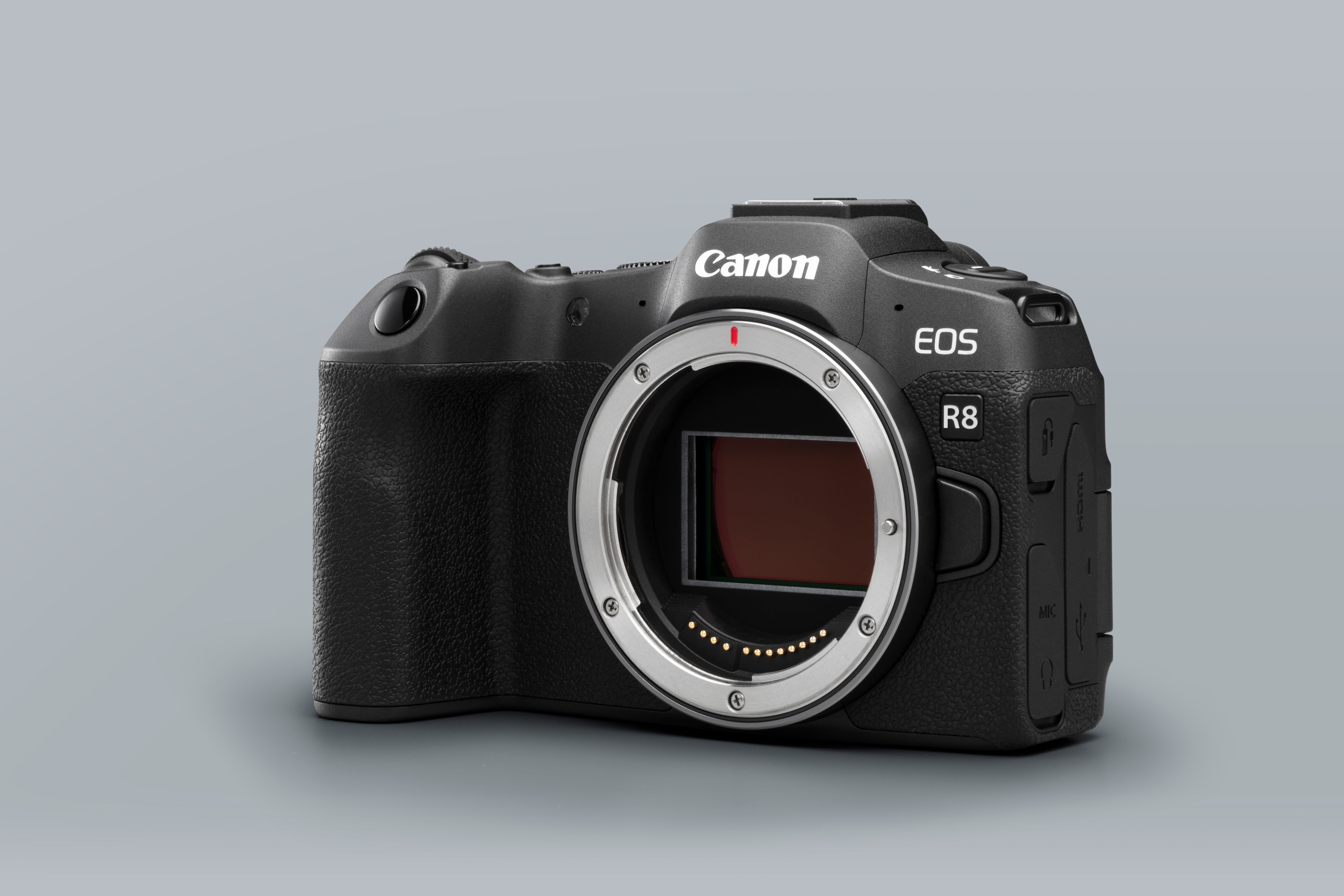
• Canon EOS R8: 24.1MP full frame CMOS
• Canon EOS RP: 26.2MP full frame CMOS
For image quality, there isn't really much to choose between the two cameras. The Canon EOS RP has a slightly higher megapixel count, at 26.2MP, but this is very marginal and it uses a slightly older sensor which is not yet been compared in-depth to the output from the newer 24.1MP sensor in the Canon EOS R8.
Both cameras feature a full frame sensor which will enable a better level of dynamic range and more pleasing out-of-focus effects and bokeh than smaller APS-C sensors.
This one is a tie, as although the EOS RP has a slightly more megapixel-dense sensor, we would expect the newer sensor in the EOS R8 to perhaps have more quality in its newly developed sensor to make p for the small deficit in megapixels. Although both will inarguably produce stunning quality images.
2. Autofocus
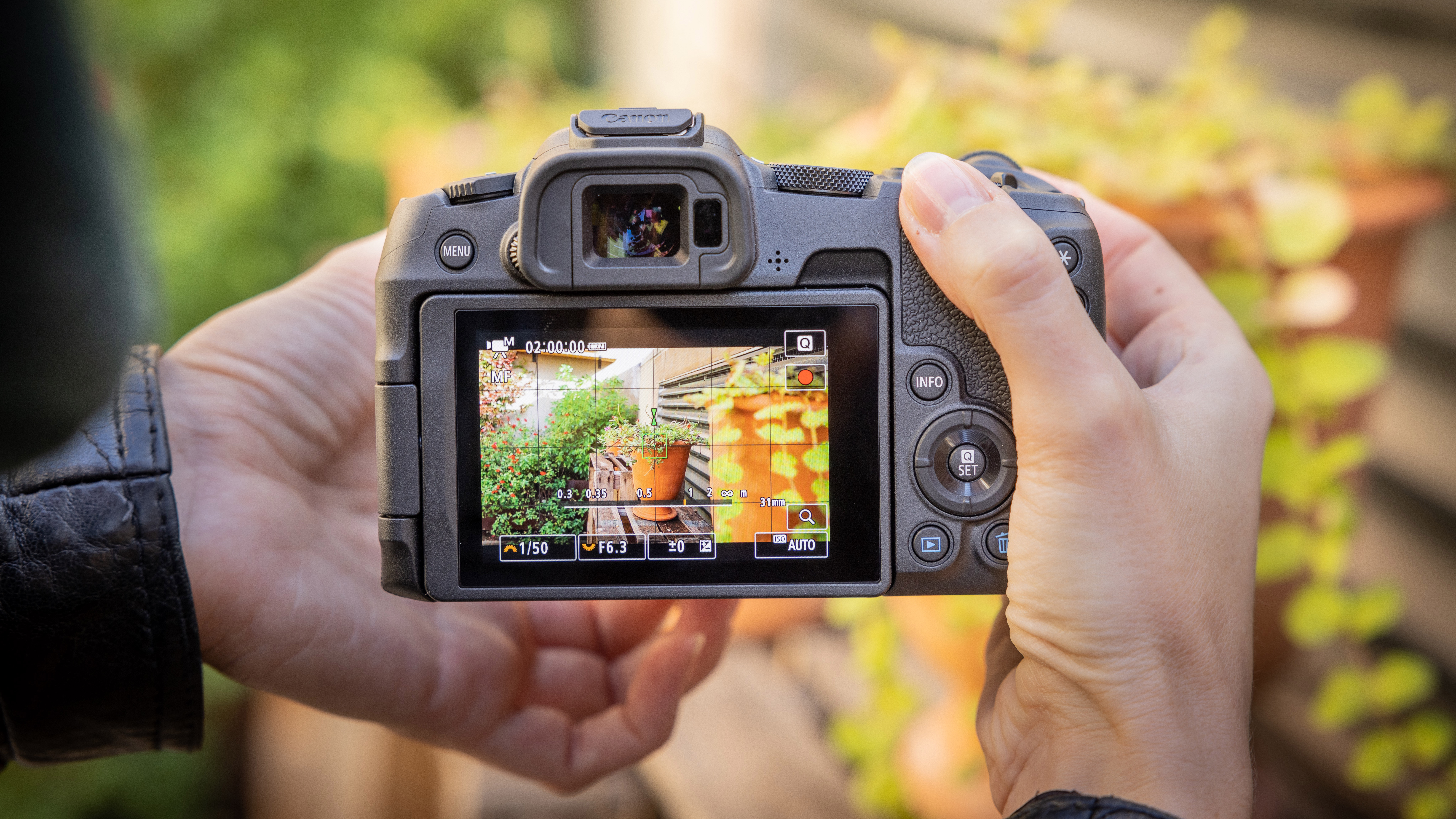
• Canon EOS R8: Dual Pixel CMOS AF II, AI Focus AF
• Canon EOS RP: Dual Pixel CMOS AF
The clear winner here is the Canon R8 with Canon's latest dual-pixel CMOS Autofocus II. The latest autofocus system uses AI and deep learning to employ new autofocus algorithms for recognition and tracking features. This includes body, head, and eye tracking for humans, tracking for animals including dogs, cats, birds, and horses, and vehicle tracking including cars, motorbikes, and trains.
The EOS RP has an older autofocus system, which is by no means bad, it just does have the latest AI-powered autofocus tracking algorithms so it can't keep up. There is face and eye detection, although it is not as fast and accurate as Canon's revamped system in the Dual Pixel Mark II.
A very clear win for the EOS R8 in this category, as its AF blows the EOS RP out of the water.
3. Stabilization
• Canon EOS R8: No IBIS, lens-based stabilization only
• Canon EOS RP: No IBIS, lens-based stabilization only
This is easy, as neither of these cameras has any in-body stabilization. Both cameras rely entirely on the lens-based stabilization in Canon's RF lenses. Lens-based stabilization offers 3 to 4 stops of shake reduction on its own, although this can be much higher when used with bodies that have IBIS.
Both The EOS R8 and RP can use Canon's digital image stabilization for video recording, although this will be at a penalty of a crop on your final video.
4. Video

• Canon EOS R8: 4K 60p oversampled, full width, 10-bit 4:2:2 internal
• Canon EOS RP: 4K 25p
This again is a clear win for the Canon EOS R8. Canon has packed this camera with the very latest video tech, it can shoot 4K 60P video as well as having internal 10-bit 4:2:2 recording in Canon C-Log3 and HDR PQ for advanced videographers. Canon has also removed any recording time limits from this new camera, so the 30-minute time restraint is gone, although you are still limited by SD card size and speed.
Almost at the opposite end of the scale, the EOS RP is not for today's serious filmmakers, offering just 4K in 25P, the EOS RP's video also has a 1.6x crop as it doesn't use the full sensor width, so the focal length displayed on your lenses will be much shorter for video. The EOS RP also has that 30-minute recording time limit for 4K.
A very obvious win here for the EOS R8 with the EOS RP not really putting up any competition in this category.
5. Battery
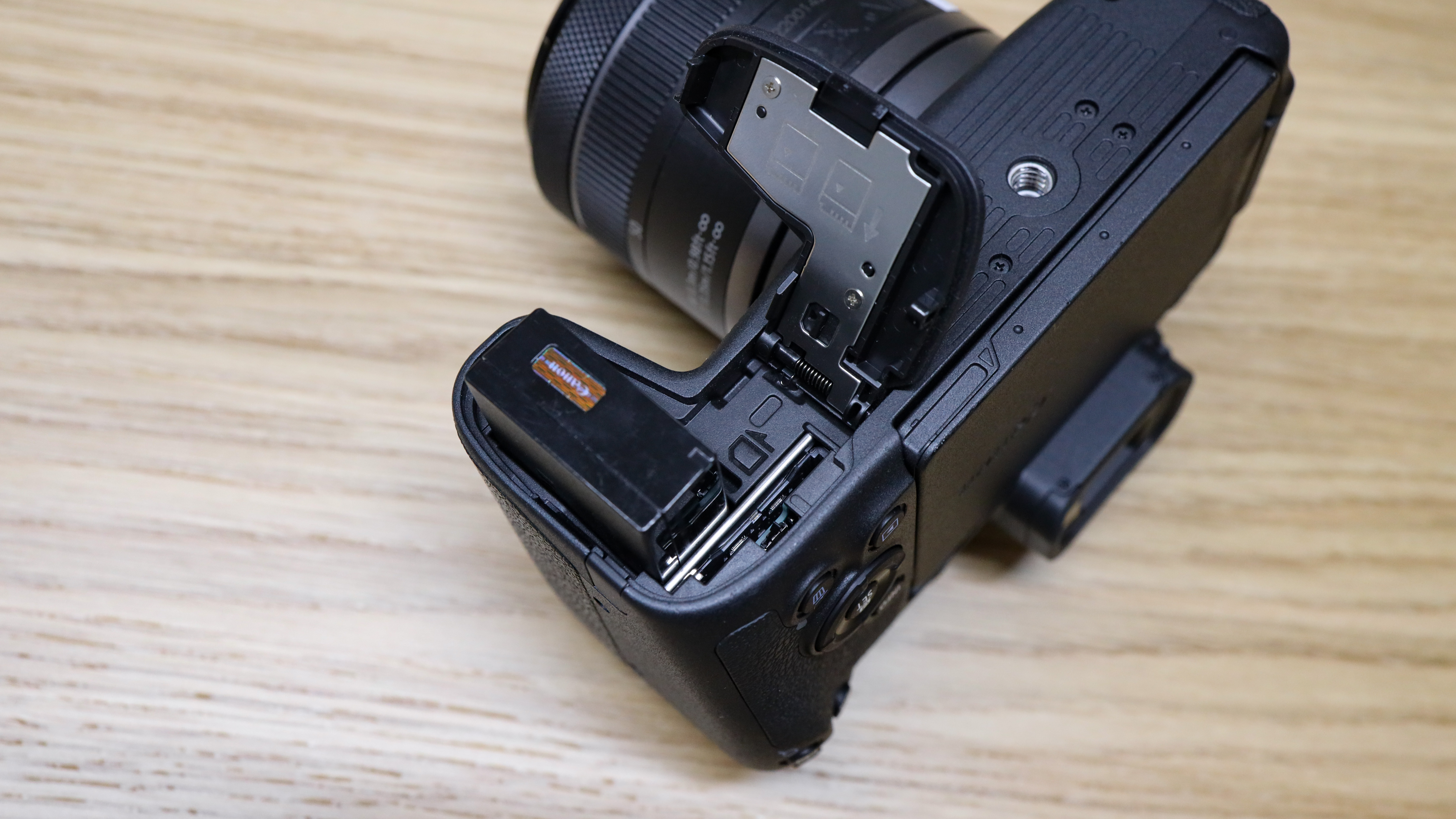
• Canon EOS R8: LP-E17, 220 shots
• Canon EOS RP: LP-E17, 250 shots
Both cameras use the LPE17 battery from Canon, however, they are rated at a different number of shots. The older Canon EOS RP is rated for 250 shots while the newer Canon EOS R8 is only rated for 220 shots. This is most likely due to the additional processing power of the new Canon autofocusing system in the EOS R8, or other features adding a little drain.
Canon does not publish any information about how long these batteries last for video, so it is hard to compare directly, but these are not the most powerful batteries from Canon, so will not be all-day video machines.
This category is a draw as ±30 shots aren't really a deciding factor, but both of these cameras don't use Canon's strongest batteries so you'll have to buy some spares to make it through the day.
6. Continuous shooting

• Canon EOS R8: 40fps electronic, 6fps first curtain electronic shutter, 30fps Raw Burst
• Canon EOS RP: 4fps with AF
Again, another area where the EOS RP cannot touch the Canon EOS R8. The EOS RP has a very lackluster four frames-per-second continuous shooting with autofocus (this does go up to 5fps without continuous focus). Meanwhile, the Canon EOS R8 can shoot 40 frames per second with its electronic shutter.
This is reduced to only six frames per second with the electronic first curtain shutter (to counter rolling shutter effects). However, the Canon R8 also has a 30 frames per second raw burst mode which the Canon EOS RP lacks.
If you want to shoot quickly, for example, if you like to shoot a lot of wildlife or sport, then the EOS R8 is the clear choice of camera here.
7. Storage & Build
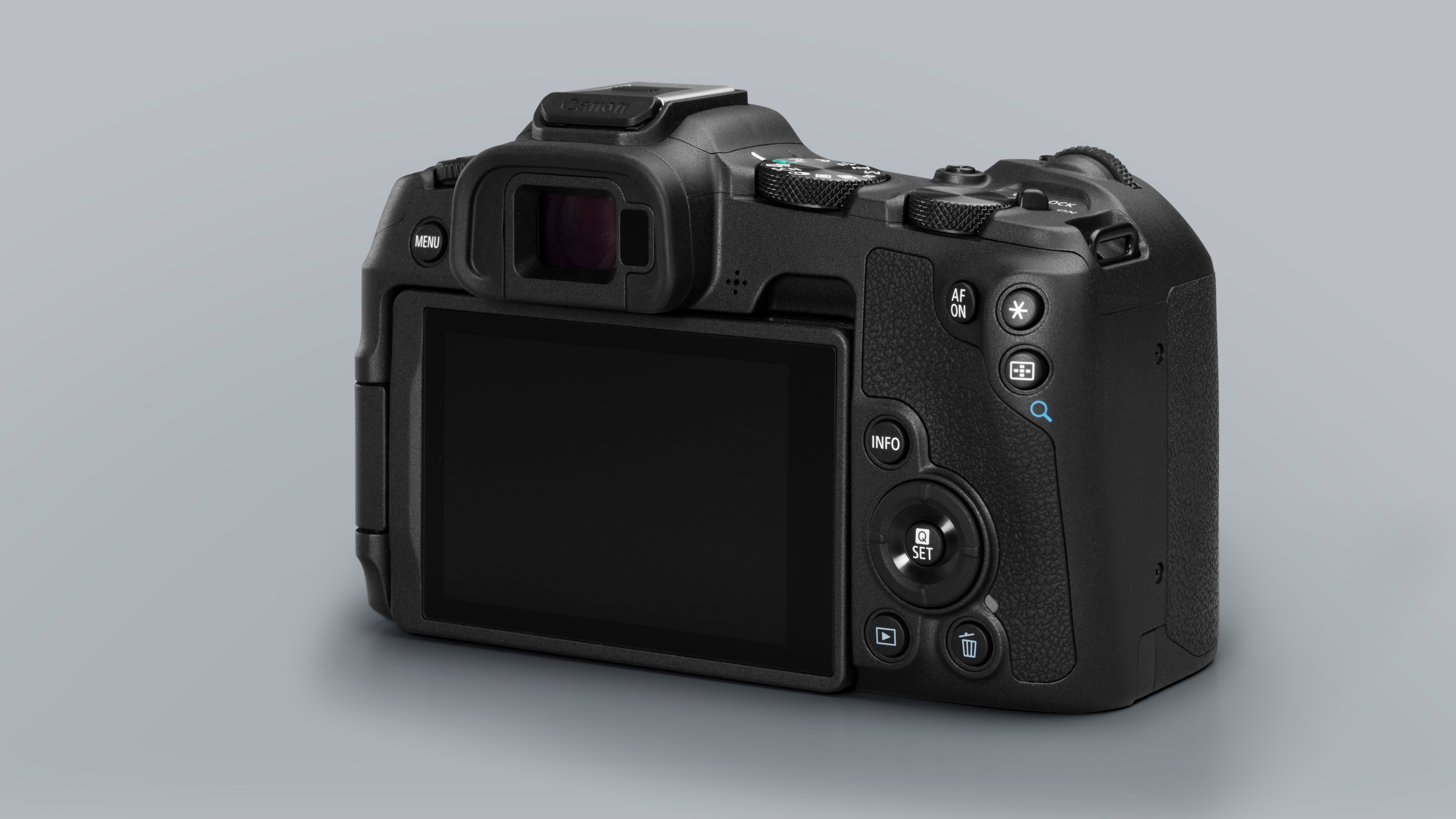
• Canon EOS R8: 1x SD UHS-II, 2.36m dot OLED EVF, 3-inch 1.62m dot vari-angle screen
• Canon EOS RP: 1x SD UHS-II, 2.36m dot OLED EVF, 1.04m dot vari-angle screen
There is not much to separate the cameras on here, as they have a very similar design as the new EOS R8 is actually based on the body of the EOS RP that came before it. Neither camera has any sort of weather sealing. Both cameras have one SD card slot with the same speed rating that is located on the base of the camera under the battery door.
Both cameras seem to have the exact same 2.36 million dot OLED electronic viewfinder, however, they differ with the vari-angle screen on the rear of the camera, with the older EOS RP screen only being 1.04 million dot, while the newer Canon EOS R8 has a 1.62 million dot screen.
As these cameras are essentially the same design, it is hard to separate them, but the slight edge goes to the Canon EOS R8 with its slightly sharper screen. However, this is marginal and won't really affect your enjoyment of the camera too much.
8. Size & Weight
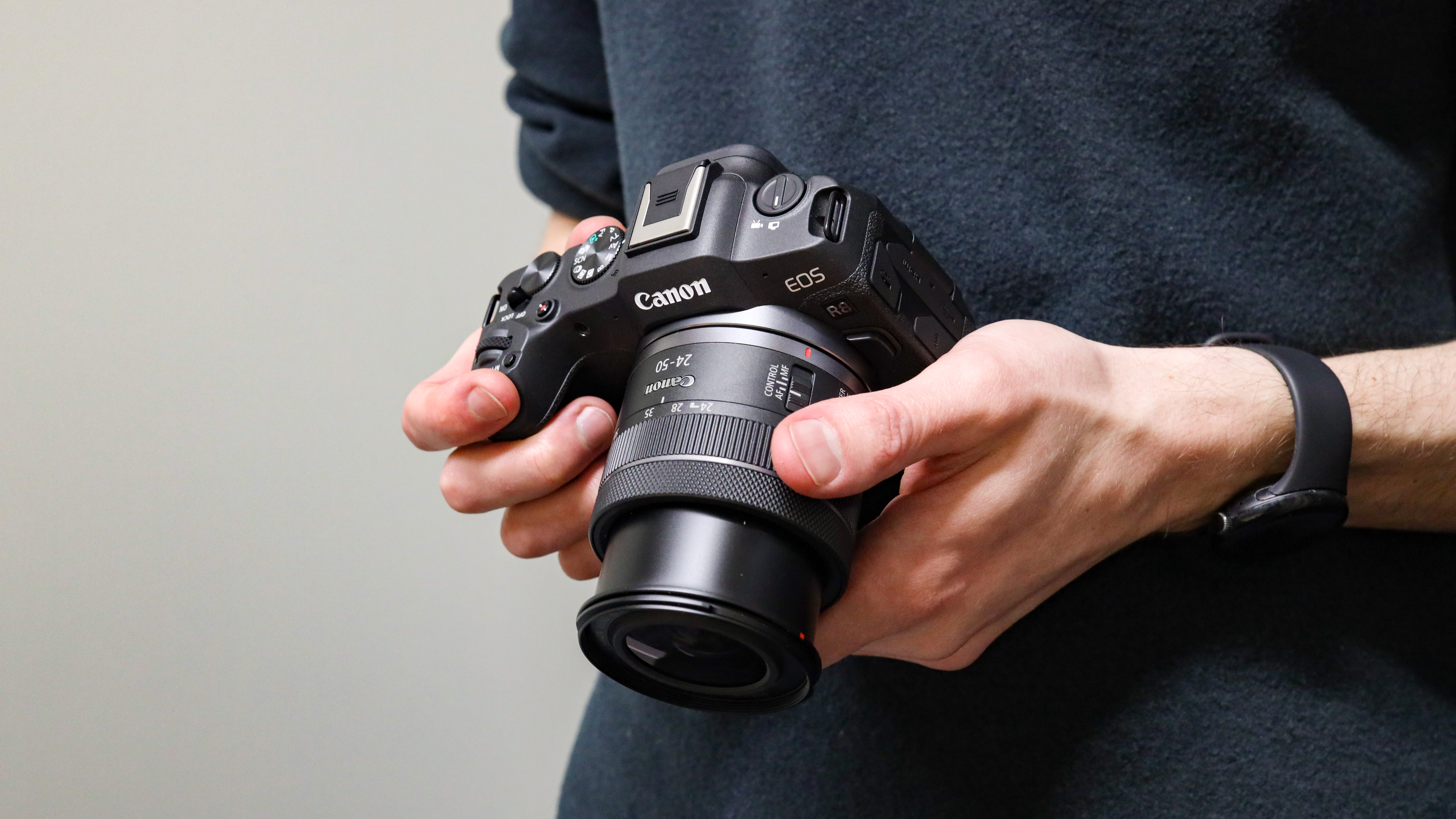
• Canon EOS R8: 132.5 × 86.1 × 70.0 mm, 414g
• Canon EOS RP: 132.5 × 85.0 × 70.0 mm, 440g
As in the previous points, the Canon R8 is based on the design of the Canon RP. So it is practically the same size with only 1mm of difference between the two of them. The Canon R8 does manage to shave an additional 26 g off the weight of the Canon RP which makes it slightly lighter, although these are both very light cameras to begin with, and it is hard to notice a 20g weight difference.
This one is going to have to go to the Canon R8 as it is slightly lighter so it makes for a more travel and pocket-friendly camera.
9. Lenses

Both cameras use the Canon RF mount which is Canon's full frame mount for its EOS R mirrorless camera range. Both cameras are also capable of using RF-S mount lenses, but at a crop. Canon's range of lenses has improved dramatically in the past 4 years, and now there's a lot of option for RF lenses covering everything from small compact entry level lenses through to large professional Canon l series lenses. There is something for everyones needs and budget.
10. Price
• Canon EOS R8: $1,499 / £1,699 (~AU$2,146)
• Canon EOS RP: $999 / £1,049 (~AU$1,430)
You can make some savings on the Canon RP over the Canon EOS R8, but the savings might not be worth what you sacrifice. For only an additional $500/£600, you can get a much better autofocus system, a dramatically faster continuous shooting, and incredible video that leaves the RP in its dust.
Although if you are budget conscious, the Canon RP is still excellent value for money and one of the cheapest ways to get into full frame photography. Today it still offers a very solid set of features that will enable you to take beautiful images, and at a very reasonable price.
Canon R8 vs Canon RP: Verdict

That isn't really any question over which is the better camera, with the EOS R8 improving on almost every aspect of the Canon EOS RP. The only thing it can't improve on is the price, so if that is something that is very important to you when thinking about which camera to buy, then the EOS RP is still an excellent purchase today as it offers great image quality.
However be aware that you will be missing out on a lot of the latest and greatest features, and it is only a small increase to get up to the EOS R8 which offers a photography experience that is much closer to the EOS R6 Mark II than it is to the EOS RP.
Pre-order the Canon EOS R8 at B&H Photo, US
Pre-order the Canon EOS R8 at Wex Photo, UK
See also
Best Canon RF lenses
Get the Digital Camera World Newsletter
The best camera deals, reviews, product advice, and unmissable photography news, direct to your inbox!

Gareth is a photographer based in London, working as a freelance photographer and videographer for the past several years, having the privilege to shoot for some household names. With work focusing on fashion, portrait and lifestyle content creation, he has developed a range of skills covering everything from editorial shoots to social media videos. Outside of work, he has a personal passion for travel and nature photography, with a devotion to sustainability and environmental causes.
